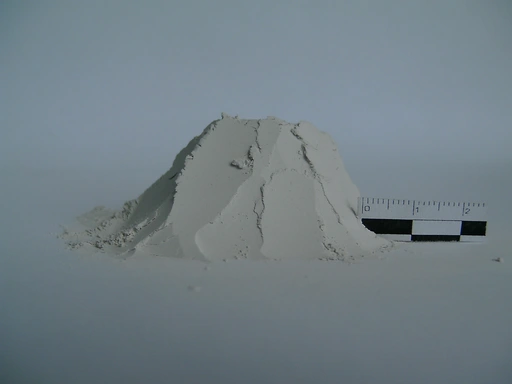Marble is a metamorphic rock consisting of carbonate minerals that recrystallize under the influence of heat, pressure and aqueous solutions, most commonly calcite (CaCO3) or dolomite (CO3)2 and has a crystalline texture of varying thickness. Marble is typically not foliated (layered), although there are exceptions.
The characteristic swirls and veins of many colored marble varieties are usually due to various mineral impurities such as clay, silt, sand, iron oxides, or chert which were originally present as grains or layers in the limestone.
Pure white marble is the result of metamorphism of a very pure (silicate-poor) limestone or dolomite protolith.
Green coloration is often due to serpentine resulting from originally magnesium-rich limestone or dolomite with silica impurities. These various impurities have been mobilized and recrystallized by the intense pressure and heat of the metamorphism.
white marble
01 Raw material
Marble before grinding:

02 Output material
Marble after grinding:

white marble (Greece)
01 Raw material
Marble before grinding:

02 Output material
Marble after grinding:

marble (Trybushany)
01 Common
Mohs hardness – 3.5-4.5
Density – 2750-2830 kg/m3
Water absorption – 0.1-0.27%.
Total porosity – 0.14-2.63 %.
Compressive strength:
in air-dry state – 1140 kgf/cm2
in water-saturated state – 1130 kgf/cm2
Abrasion resistance – 0.4 – 1.2 g/cm2
Strength – 800-1200 kgf/cm2
Color – creamy gray
Chemical composition, wt. %:
CaСO3 – 76,9; Fe2O3 – 1,14; MgO – 3,4; SO3 – 0,05; Al2O3 – 2,26; SiO2 – 2,3; pH – 9,24
02 Raw material
Marble before grinding:

03 Output material
Marble after grinding:
